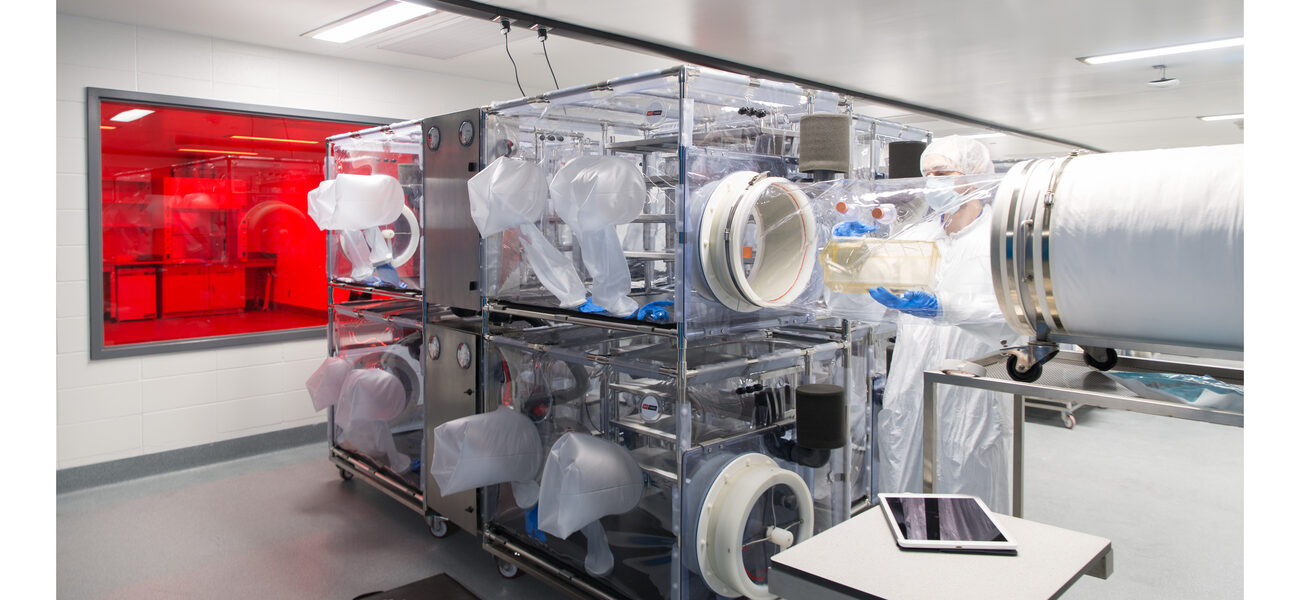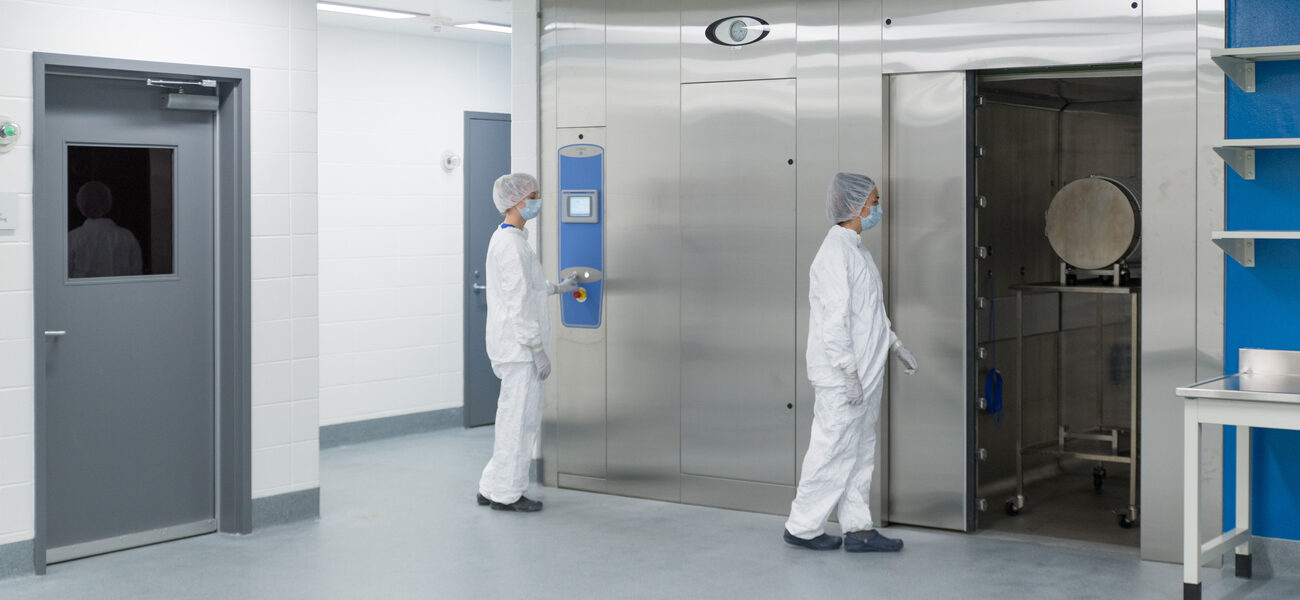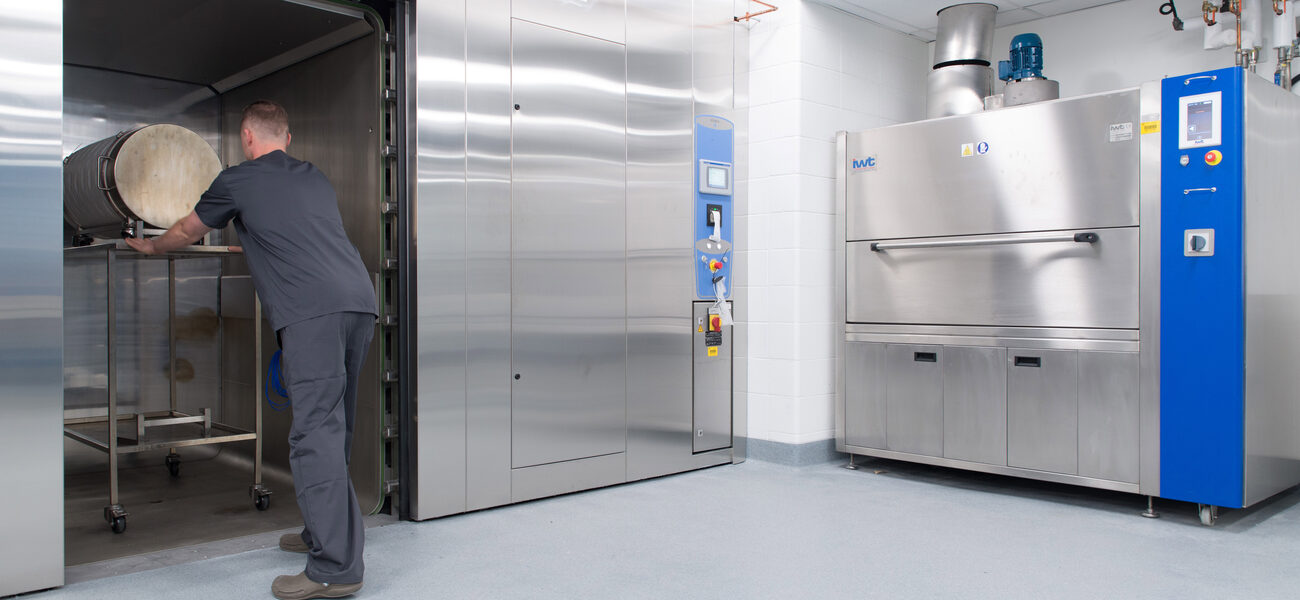The International Microbiome Centre (IMC) at the University of Calgary houses one of the largest germ-free facilities in the world and the only one that has incorporated intra-vital imaging. Constructed in a portion of the basement at the Cumming School of Medicine, the germ-free facility complements the other microbiome platforms—including mass cytometry, genomics, proteomics, metabolomics, bioinformatics, biobanking, and live cell imaging—by providing a model system in which to study the microbiome. The center provides a sterilized housing environment, where researchers explore the microbiome and its impact through adding bacteria to germ-free models and analyzing what those bacteria do to the animals’ immune systems, organs, and overall health.
To convert the 1970-era basement for the unique structural and mechanical requirements of the IMC germ-free facility, even the floor slab had to be removed. The resulting facility consists of a one-way U-shaped corridor lined with more than a dozen rooms, starting with change rooms and showers for every person who enters. All inanimate objects that enter the facility must be either autoclaved or wiped with sterilant followed by blasting with HEPA-filtered air to decrease the chance of contamination upon entry into the clean facility. Each room is essentially a sealed box with its own air pressure level, and the facility can be entered only with a key card to ensure maintenance of sterility and air pressures. The roof was also reinforced to accommodate an HVAC system that serves only the IMC germ-free facility.
The spaces are broken down into four main areas: neutral, sterile, non-pathogen Level 1, and Level 2 pathogen.
The room with the highest pressure—the “cleanest” room—is the axenic (germ-free) breeding room filled with flexible-film isolators that accommodate up to 2,000 cages.
A surgical suite used for “embryo transfer” into germ-free recipients has a specialized biological safety cabinet with surgical microscopes. The cabinet contains a quadralock port on one side to connect to an isolator in order to maintain sterility of the recipients throughout the embryo transfer procedure.
Each of two experimental suites—one level 1 and one level 2—has capacity for intra-vital microscopy that allows researchers to witness the immune system reacting to the microbes in real time as well as additional areas dedicated for other experimental procedures. Observations can also be made over both short and long time periods as there are holding rooms in each of these areas equipped with isolators.
The facility also houses its own cage wash and two dedicated autoclaves.
The main interior walls are constructed of concrete block to withstand wear and tear and minimize maintenance and disruption, while others are specially constructed with glass walls that are meant to be reconfigured as the researchers’ needs change.
The IMC germ-free facility can accommodate numerous multi-disciplinary researchers and staff with a focus on addressing health issues internationally. The facility also provides an opportunity to collaborate with industry to enable fast and effective translation of research.
| Organization | Project Role |
|---|---|
|
Chernoff Thompson Architects
|
Architect
|
|
PCL Construction Service Inc
|
Construction Manager
|
|
Remedy Engineers
|
Mechanical Design
|
|
RJC Engineers
|
Structural Design
|
|
AECOM
|
Electrical Design
|
|
IsoTech Systems
|
Multi-Cage Specialized Isolators
|
|
Single-Cage Specialized Isolators
|
|
|
Cage Washer
|
|
|
Clean Air Products
|
Air Shower
|
|
Steris Canada
|
Autocalves
|
|
Siemens Canada Limited, Building Technologies Division
|
Key Card Entry System
|
|
NUAIRE Inc.
|
Embryo Transfer Biosafety Cabinet with Specialized Surgical Microscopes
|
|
Specialized Biosafety Cabinets with Single Cage and Multi-Cage Port Systems
|



